 |
|
|||||||||
| First-round picks
J. Kyle Anderson, PhB’28, SB’28, starred in baseball from 1926 to 1928. After playing for the Pittsburgh Pirates organization, he returned to campus as head baseball coach (1934–71). A member of the American Baseball Coaches Association Hall of Fame, he coached the U.S. team in the 1959 Pan American Games.
Jay Berwanger, AB’36, was a triple threat on the football field. He averaged 4.2 yards per carry running the ball, 18.4 yards per pass completion, and 37.3 yards on his punts. In a poll of more than 100 Big 10 players, all but three voted Berwanger the conference’s best halfback. His senior-year, 85-yard dash against Ohio State remains one of the great runs in college football. The No. 1 draft pick in the NFL’s first draft, he was courted by George Halas and the Chicago Bears—but they were unwilling to meet his $25,000 asking price. Also a track star, Berwanger ran the 100 in 10.0 seconds, the 120-yard hurdles in 15.6 seconds and the 440 in 49.0 seconds. He pole vaulted 12 feet and threw the shot put 48 feet and the javelin 190 feet. Although he would have been a gold-medal favorite in the Olympic decathlon, he stayed in school to graduate on schedule.
Fritz Crisler, PhB’22, won nine letters in three sports, was All-Big 10 in football and basketball, and captained the Maroon baseball team. As Michigan’s coach (1938–47) he compiled a 71-16-3 record, introduced the two-platoon system, and took the Wolverines to a national championship.
Walter Eckersall, X’07, starred as a running back, kicker, and defensive player from 1904 to 1906. A member of the College Football Hall of Fame, he was named to Walter Camp’s “All-Time All-America Team” as one of the greatest college football players during the sport’s formative years.
Gretchen Gates Kelly, AB’86, is the all-time leading scorer (1,924 points) and rebounder (1,056) in Maroon women’s basketball. All-conference for four years and an All-American, she holds 11 career, season, and game records. William Haarlow, X’36, played on losing basketball teams for three years and faced double teams throughout the Big 10, but still managed to rank among the conference scoring leaders for three years. The All-American was a deadly shooter from the outside and a great one-on-one player, with moves and flash that were years ahead of their time.
Chester W. Murphy, AB’39, and William E. Murphy, AB’39, twin brothers who won Big 10 doubles championships in 1938 and 1939, are entering the Hall of Fame as a tandem team.
Harlan “Pat” Page, SB’10, starred on Big 10 conference champion teams in three sports. An end on the football team, a guard on the basketball team, and a pitcher for the baseball team, he later coached baseball and basketball, taking the Maroons to Big 10 titles in both sports. Laura Silvieus, AB’78, MBA’83, won 12 varsity letters in three sports (1973–77). Elected captain on ten of her 12 teams, she earned MVP honors in volleyball (1975, 1976) and basketball (1977). In softball she ranks among the University’s top three for hitting, runs batted in, and stolen bases—hitting .493 with 30 RBIs in 20 games as the Maroons won a 1977 championship. Silvieus was the first recipient of the Gertrude Dudley Medal, now awarded annually to the top female student-athlete.
Joseph H. “Big Joe” Stampf, AB’41, played basketball from 1938 to 1941, winning the Big 10 scoring title in 1941. With the best win record of any U of C coach—208 victories and a winning percentage of .638—he led the Maroons to 13 winning seasons in 18 years, taking teams to the NCAA College Division quarter-finals in 1961 and to the tournament’s first round in 1974. Walter P. Steffen, PhB’10, JD’12, a member of the College Football Hall of Fame, led the Maroons to two Big 10 titles as quarterback in 1907 and 1908. All-conference from 1906 through 1908 and a consensus All-American in 1908, he is considered one of the great quarterbacks in college football’s early era.
Peter B. Wang, AB’92, earned All-American honors four straight years as a wrestler. Named Division III’s outstanding wrestler in 1992, he won individual NCAA titles in 1991 and 1992 in the 177-pound weight class.
|
|
Contact
|

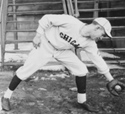 Quick
stats on the inaugural class of the Chicago Athletics Hall of Fame,
inducted October 10 as part of Homecoming 2003.
Quick
stats on the inaugural class of the Chicago Athletics Hall of Fame,
inducted October 10 as part of Homecoming 2003. C.
Noel Bairey Merz, AB’77
C.
Noel Bairey Merz, AB’77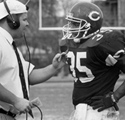 Frank
A. Baker II, AB’94
Frank
A. Baker II, AB’94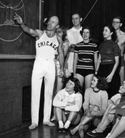 Erwin
“Bud” Beyer, AB’39
Erwin
“Bud” Beyer, AB’39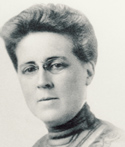 Gertrude
Dudley
Gertrude
Dudley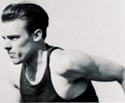 Raymond
H. Ellinwood, X’45
Raymond
H. Ellinwood, X’45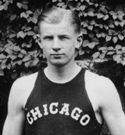 Edward
“Ted” Haydon, PhB’33, AM’54
Edward
“Ted” Haydon, PhB’33, AM’54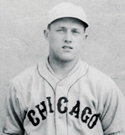 Roy
K. Henshaw, X’33
Roy
K. Henshaw, X’33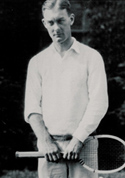 George
M. Lott Jr., X’28
George
M. Lott Jr., X’28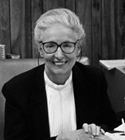 Mary
Jean Mulvaney
Mary
Jean Mulvaney Nelson
H. Norgren, PhB’14
Nelson
H. Norgren, PhB’14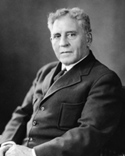 Amos
Alonzo Stagg
Amos
Alonzo Stagg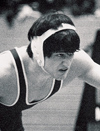 Leon
F. Strauss, PhB’47
Leon
F. Strauss, PhB’47